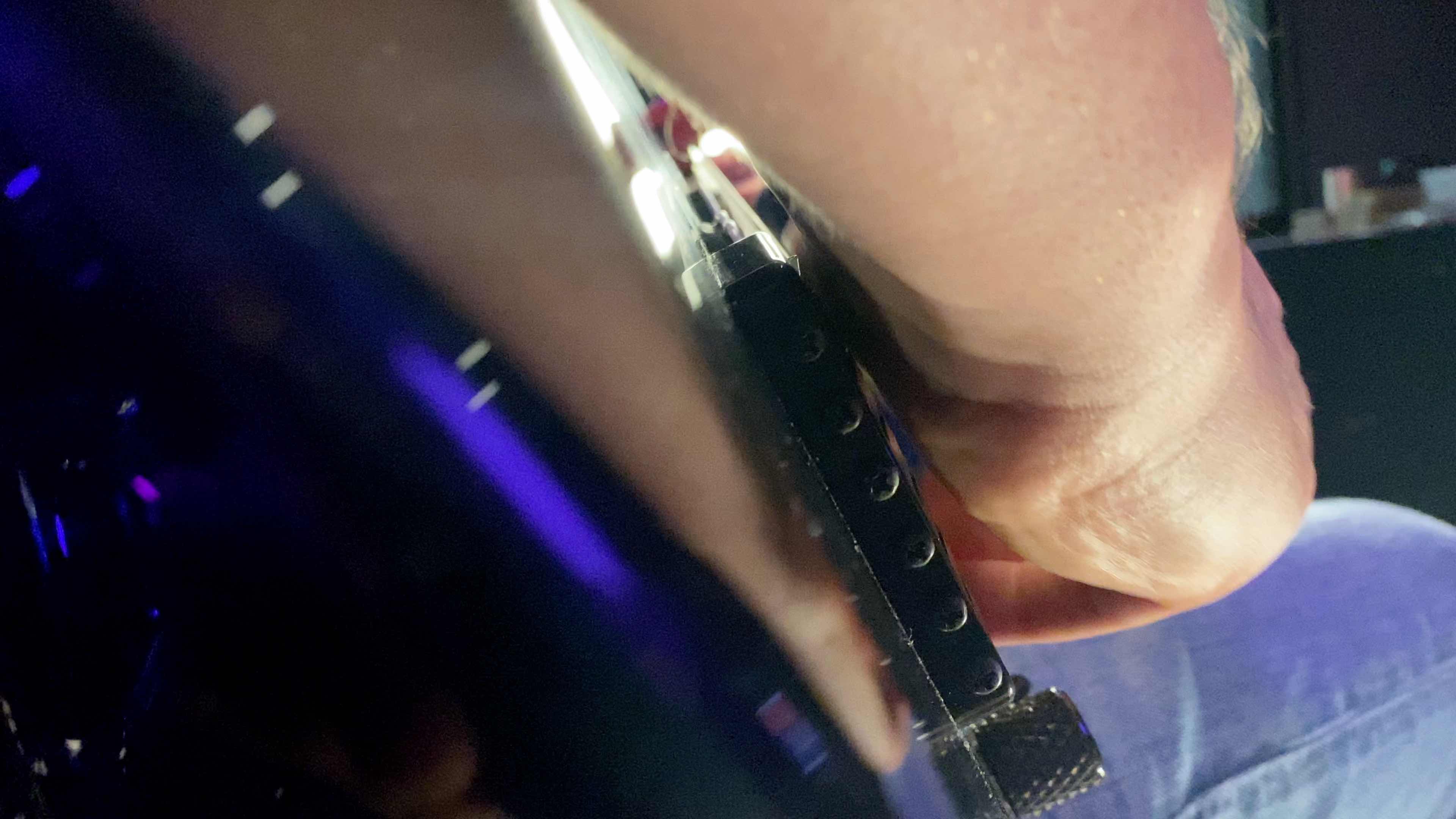I was pretty excited to get my magnet the other day!
It’s helping me already. I’ve been messing with DBX a decent amount the last 8 months or so. Here’s a short phrase that feels pretty easy for me on most days:
Overall I thought I was doing ok considering I’ve never tried cross picking in my life, prior to earlier this year.
BUT, on another tune I’ve been playing around with, I noticed this weird tense looking thing happening on and off. I always knew this piece was harder but didn’t realize exactly why until watching it under the magnet:
To me it looks like in places I can see the fingers start to curl up. There’s probably even some hyperextension in my MCP joints, which isn’t great.
So I tried to specifically address this, playing just the phrases by themselves. To me it looks better already. Flatter pick orientation (I had no idea I was actually slanting the pick downward a bit!!! I was going for the Andy Wood neutral slant since I’ve heard that’s the way to go with this setup). Also, it’s more relaxed looking and a little faster.
I changed my grip a little bit and put on a capo (helps the left hand not have to work as hard so I could concentrate on not being tense in either hand). Still not perfect, but to me this is a great win because I’ve spotted a problem and am already working on solving it and making the piece better. Here’s what that looks like:
Next I’m gonna do the same thing to this one:
I notice the second half, the same thing starts to happen. I can see that middle finger of the pick hand start to move away from my index finger, indicating that tension is creeping back in. It’s a more difficult section in general, both in fretting and of course the picking (a lot more string skips).
Anyway, I’ve got a glowing review of the magnet so far.
The only surprise in usability was that the moving parts felt pretty ‘stiff’, particularly the part that pulls apart to hold the phone. I put a little bit of Vaseline on those moving parts and all better 
Oh yeah, I wasn’t sure if I should put this in “technique critique” or “show and tell”. Since I’ve still got quite a ways to go before I’m impersonating Andy Wood, if anyone has any feedback on the playing, it’s welcome!






